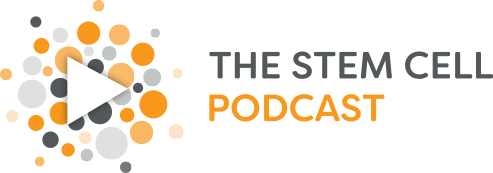
Podcast: Play in new window
Guest:
Dr. Eirini Papapetrou, an associate professor at the Icahn School of Medicine at Mt. Sinai where she discusses her work and latest paper on using stem cells to model blood diseases containing a chromosomal deletion.
Resources and Links
Sushi Parasite Inspires Worm Test for Cancer – Japanese researchers have discovered that Caenorhabditis elegans worms can detect cancer in people’s urine.
New Genetic Variant that Causes Autism Identified by Johns Hopkins-Led Team – A Johns Hopkins-led team of researchers has identified a new genetic cause of the disorder using a novel approach that focuses on rare families severely affected by autism.
Bad Gene Cripples Flu Defenses – This article describes how a girl nearly died from flu because of mutated genes.
High-Fat Diet Alters Behavior and Produces Signs of Brain Inflammation – There is a great possibility that a high-fat diet produces changes in health and behavior, in part, by changing the mix of bacteria in the gut, also known as the gut microbiome.
NASA’s Opportunity Rover Just Completed an 11-Year Marathon on Mars – NASA confirmed this week that the six-wheeled robot has now traveled more than 26.219 miles in eleven years and two months.
Apple’s New ResearchKit: ‘Ethics Quagmire’ or Medical Research Aid? – Apple’s ResearchKit is designed to let medical researchers create iPhone apps for their studies that will help them recruit participants — without said participants ever setting foot in the lab.
Woolly Mammoth DNA Inserted into Elephant Cells – This article describes the attempt of scientists to bring extinct species back from the grave through a process known as de-extinction.
Surprise Finding Heightens Concern over Tiny Bits of Plastic Polluting Our Oceans – A team of scientists’ accidental finding of plastic in the skin of both farmed and wild fish adds to already growing environmental and public health concerns about the plastic particles or microplastics pervading our oceans and waterways.
Altering Brain Chemistry Makes Us More Sensitive to Inequality – Researchers find that giving a drug that changes the neurochemical balance in the prefrontal cortex of the brain causes a greater willingness to engage in prosocial behaviors, such as ensuring that resources are divided more equally.
Engineering the Perfect Baby – A group of scientists try to edit the DNA of human germ line to correct disease genes and to pass those genetic fixes on to future generations.
Don’t Edit the Human Germ Line – Heritable human genetic modifications pose serious risks, and the therapeutic benefits are tenuous, warn Edward Lanphier, Fyodor Urnov and colleagues.
Industry Body Calls for Gene Editing Moratorium – Gene-editing companies say research on altering the DNA of human reproductive cells is dangerous and unethical.
A Prudent Path Forward for Genomic Engineering and Germline Gene Modification – Scientists suggests that a framework for open discourse on the use of CRISPR-Cas9 technology to manipulate the human genome is urgently needed.
Scientists Call for a Summit on Gene-Edited Babies – A group of senior American scientists and ethics experts are calling for a debate on the gene-engineering of humans, warning that technology able to change the DNA of future generations is now “imminent.”
The ISSCR Statement on Human Germline Genome Modification – The International Society for Stem Cell Research calls for a moratorium on attempts at clinical application of nuclear genome editing of the human germ line.
Double-Blind Peer Review – Nature Biotechnology, together with Nature and its sister journals, is now offering anonymity to authors during the peer-review process.
Celebs’ Stem Cell Facial Treatments Include Sheep Placenta, Others Get Human Cells – Celebrities pay hundreds of dollars to have a sheep placenta facial or known as collagen treatment wherein the placenta mush or stem cell fluid is smeared all over the face, and the skin is pricked so the cells can penetrate below the epidermis.
Astrazeneca Buys into Harvard’s Stem Cell Tech for Diabetes R&D – Harvard professor Doug Melton and his team at the Harvard Stem Cell Institute will use its technology for engineering insulin-producing beta cells to better understand how both types of diabetes develop.
Scientists Coax Stem Cells to Form 3D ‘Mini-Lungs’ – Three-dimensional “mini-lungs” coaxed from stem cells and grown in a dish may offer insight into lung disease and could lead to the development of new drugs.
UCSF Team Finds Key to Making Neurons from Stem Cells – This article describes how the research team at UC San Francisco discovered an RNA molecule called Pnky that can be manipulated to increase the production of neurons from neural stem cells.
Elucidating Molecular Phenotypes Caused by the SORL1 Alzheimer’s Disease Genetic Risk Factor Using Human Induced Pluripotent Stem Cells – Researchers used human induced pluripotent stem cells to examine genetic variation in the SORL1 gene and possible contributions to sporadic Alzheimer’s disease-related phenotypes in human neurons.
Modeling the Early Phenotype at the Neuromuscular Junction of Spinal Muscular Atrophy Using Patient-Derived iPSCs – Researchers describe the results done by researchers who generated neuromuscular junction (NMJ) or NMJ-like structures using motor neurons derived from spinal muscular atrophy patient-specific induced pluripotent stem cells (iPSCs).
Integrated Genome and Transcriptome Sequencing of the Same Cell – This article shows the integrated sequencing approach using a quasilinear amplification strategy to quantify genomic DNA and mRNA from the same cell without physically separating the nucleic acids before amplification.
Functional Analysis of a Chromosomal Deletion Associated with Myelodysplastic Syndromes Using Isogenic Human Induced Pluripotent Stem Cells – Scientists use cellular reprogramming and genome engineering to functionally dissect the loss of chromosome 7q (del(7q)), a somatic cytogenetic abnormality present in myelodysplastic syndromes.
Photo Reference: Courtesy of Dr. Papapetrou

